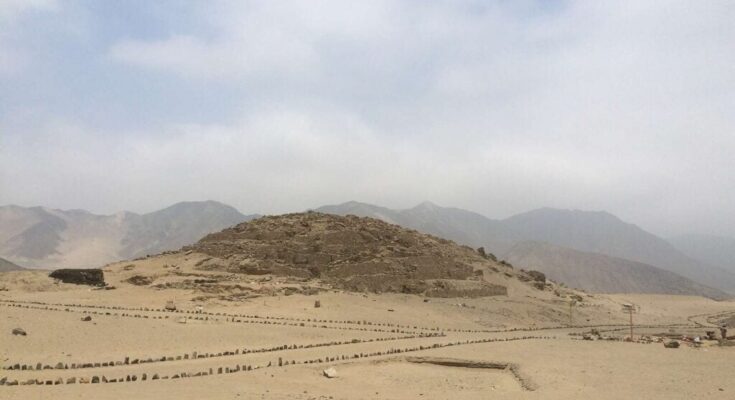
Near the coast of Peru lies the ancient city of Caral, which was in existence at the same time as the Egyptians were still building the pyramids. Caral is said to be the first ancient city of the Americas.
Caral was the central city on Peru’s coastline from 3000 to 1800 BC. Today, it is remembered for the massive stone complex its people left behind. The Stone City spans over 150 square miles of desert and contains many plazas, houses for both the elite and residents, and a 60-foot temple.
The discovery of Caral
This city remained forgotten under the sands of the desert until American archaeologist Paul Kosok discovered it in 1948. After Kosok discovered the massive town, Peruvian archaeologist and anthropologist Ruth Shady Solís began uncovering its secrets in the 1990s.
Caral, the first ancient city of the Americas, is located in the Barranca region of Peru and began being developed about 5,000 years ago. Caral began as a small settlement and grew into a massive city as the region’s people settled down. The Caral civilization was coastal and lived on fishing and agriculture.
Shady Solís and her team discovered just how old the city was. Betty Meggers, an archaeologist for the Smithsonian, told them, “It was almost unbelievable. This data pushed back the oldest known dates for an urban center in the Americas by more than 1,000 years.”
Archaeological findings suggest the inhabitants traded quite a lot with the people surrounding them in the jungles. Archaeologists believe that the trade they established with others led to their technological advancement, as they could have shared knowledge with various cultures from the jungle. The findings suggest that Caral was likely the main trade hub for all the surrounding people groups.
What exists today of Caral, the first known ancient city of the Americas
The 150-square-mile complex at Caral that remains today dates to around 2700 BC, and at the peak of its powers was estimated to have more than three thousand residents.
Archaeologists have discovered many other interesting things about the complex. At its simplest, there are stairs throughout the complex that align with the stars. Some altars have fire pits, suggesting they may have made ritual sacrifices.
The central pyramid, called the Pirámide Mayor, is not only 60 feet tall but also covers an area about 400 yards square. The staircase, which is 30 feet wide and goes from the plaza to the top of the pyramid, is divided into three terraces. Within the pyramid lies an amphitheater filled with deer and llama bones. Shady Solís’ team suggests that the amphitheater was used for music, indicating that the culture created different forms of art.
The surrounding city contains residential complexes and housing that archaeologists believe might have specifically been for the elite. They discovered that while elite housing was large and located at the top of pyramids, craftsmen had ground-level accommodations, and other workers, while regular people lived in the outlying areas of Caral.



